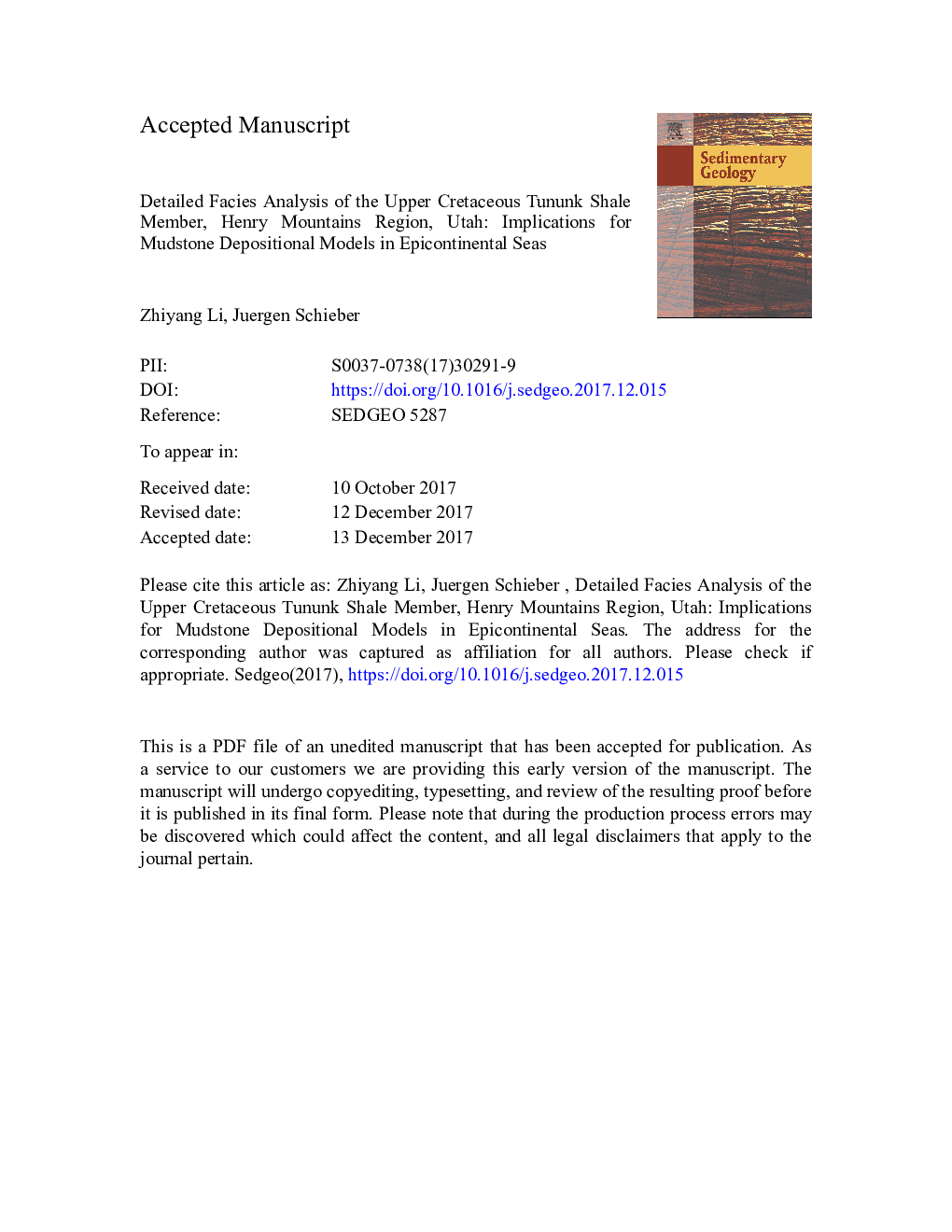| Article ID | Journal | Published Year | Pages | File Type |
|---|---|---|---|---|
| 8908550 | Sedimentary Geology | 2018 | 76 Pages |
Abstract
The resulting facies model developed from this characterization consists of a stack of four lithofacies packages including: 1) carbonate-bearing, silty and sandy mudstone (CSSM), 2) silt-bearing, calcareous mudstone (SCM), 3) carbonate-bearing, silty mudstone to muddy siltstone (CMS), and 4) non-calcareous, silty and sandy mudstone (SSM). Spatial and temporal variations in lithofacies type and sedimentary facies characteristics indicate that the depositional environments of the Tununk Shale shifted in response to the 2nd-order Greenhorn transgressive-regressive sea-level cycle. During this eustatic event, the Tununk shows a characteristic vertical shift from distal middle shelf to outer shelf (CSSM to SCM facies), then from outer shelf to inner shelf environment (SCM to CMS, and to SSM facies). Shifting depositional environments, as well as changes in dominant paleocurrent direction throughout this succession, indicate multiple source areas and transport mechanisms (i.e. longshore currents, offshore-directed underflows, storm reworking). This study provides a rare documentation of the Greenhorn cycle as exposed across the entire shelf setting. High-resolution mapping of genetically-related packages facilitate the development of process-based depositional models that can be utilized for lateral correlations into the equivalent foredeep strata of the Cretaceous Interior.
Related Topics
Physical Sciences and Engineering
Earth and Planetary Sciences
Earth-Surface Processes
Authors
Zhiyang Li, Juergen Schieber,
